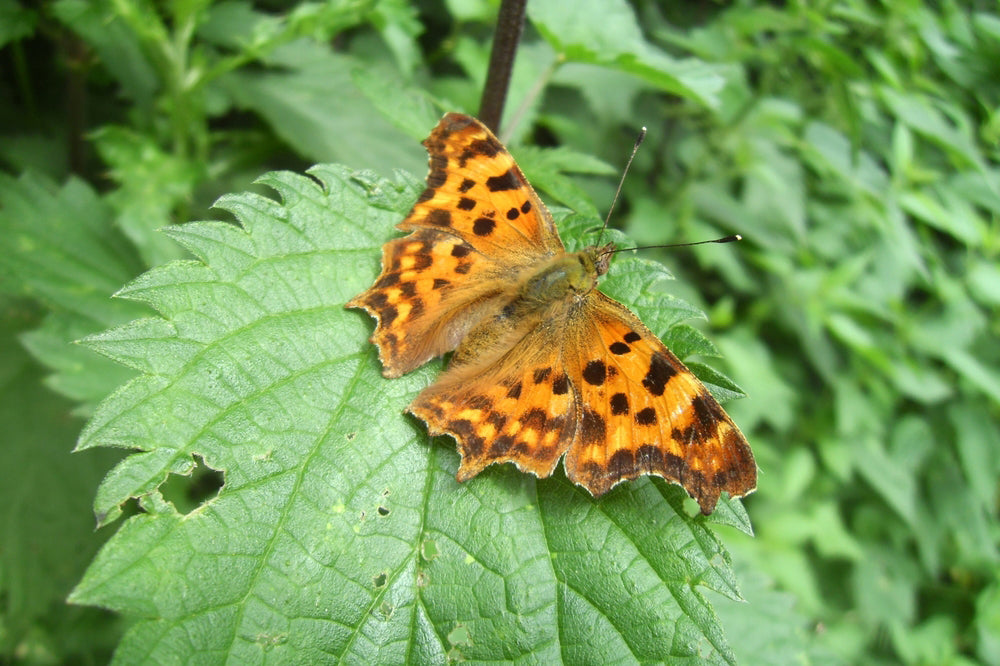Wildlife in the garden - the Comma butterfly

Often unnoticed in gardens due to its clever use of camouflage, the Comma butterfly has become a familiar sight across England and Wales. When at rest, the Comma becomes almost invisible using a type of camouflage known as mimesis - Its jagged wing edges mimicking a withered leaf, allowing it to vanish against tree bark or a pile of fallen leaves.
The name ‘Comma’ stems from the distinctive white mark on its underside, resembling a comma punctuation mark. While primarily a woodland dweller, frequenting forest paths and country lanes, the Comma often visits gardens. Remarkably adaptable, it may even emerge on unusually warm winter days. It’s a frequent visitor to the Genus garden where we often have several feeding off windfallen apples, the intoxicating smell of the slowly decaying fruit drawing them in from the nearby shaded copse.
They have an interesting life-cycle. After spring emergence, they breed a summer generation. Most offspring have dark undersides and hibernate, but some sporting brighter colours known as the hutchinsoni form, produce a second brood in late summer. Its larvae, disguised as bird droppings, mainly feed on nettles though its traditional larval foodplant wild hop, Humulus lupulus, is still sometimes used.
Once a common sight across England, Wales, and parts of southern Scotland, the Comma butterfly faced a dramatic decline by the mid-19th century. This downturn left it clinging to existence in a handful of Welsh border counties, particularly West and East Gloucestershire, Herefordshire, and Monmouthshire. Experts believe that its near disappearance may have been linked to a reduction in hop farming, as hops were a crucial food source for Comma caterpillars at the time. The 1960s however marked the beginning of a spectacular comeback as the insect adapted by using nettles as their primary larval food source and they began to reclaim their former range and beyond. Today, Commas can be found throughout England and Wales, the Isle of Man and the Channel Islands, and have even made inroads into Scotland. A few intrepid individuals have been spotted in Ireland, hinting at possible further expansion.
In the Genus garden, though present through most of the summer, we still think of them as autumn insects as they sup on the sweet cidery windfalls and spread their wings against the cottage walls to absorb any warmth the late September sun may offer.











